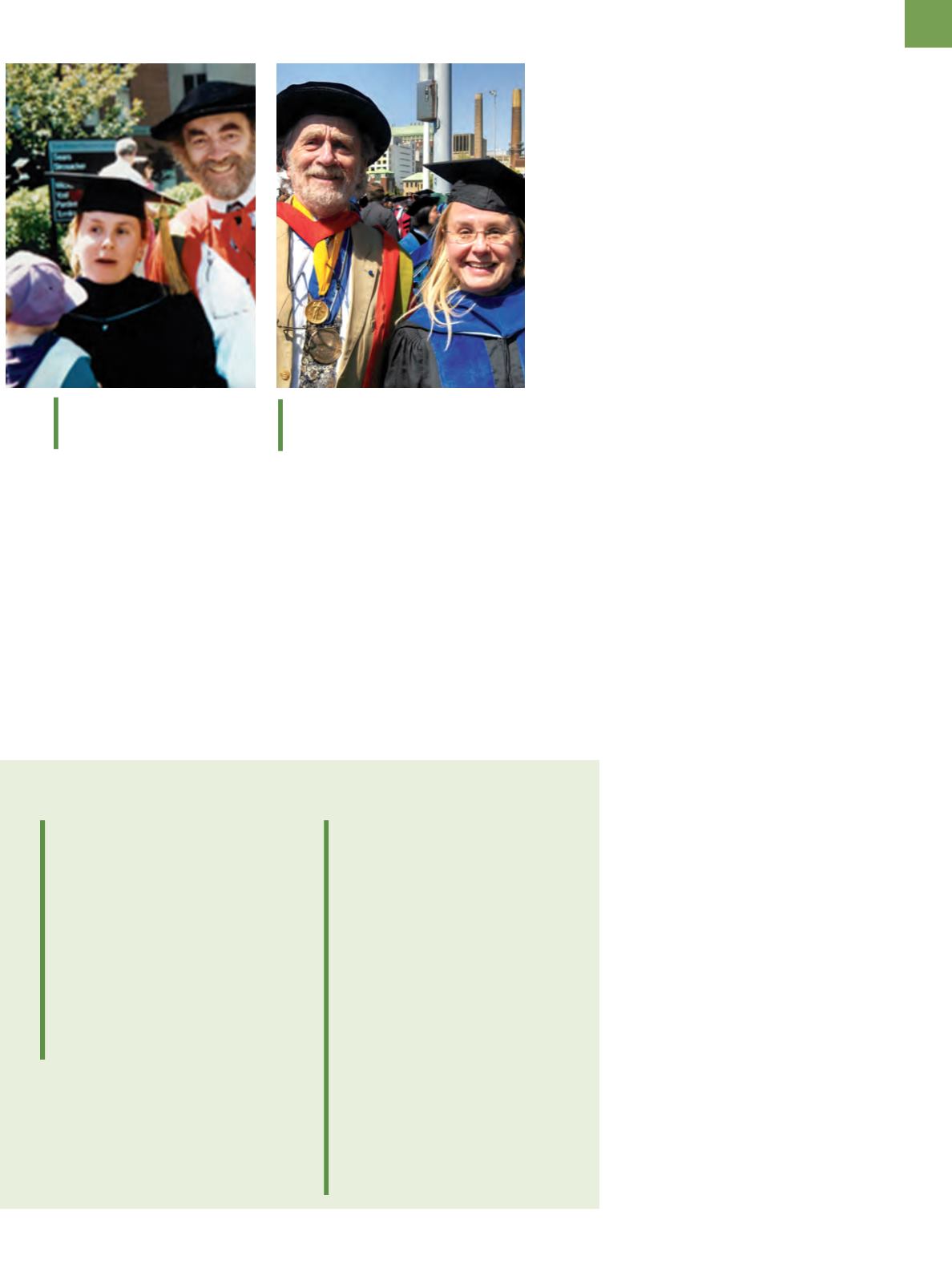

ences and giving presentations on her research work. She also
got involved in ASMCleveland Chapter activities, judging science
fairs, attending meetings, and planning events.
After graduate school, Sunniva found a position as a re-
searchmetallurgist at Nupro Co., now Swagelok, amanufacturer
of high-purity valves for the semiconductor equipment market.
It was a great time to be there, with many materials-based ques-
tions to answer and issues to solve as the semiconductor equip-
mentmarketmatured. Shewas recognizedby SEMI International
for her work in the development of standards for the semicon-
ductor equipment industry, in particular welding procedures
and inspection criteria for high purity welding; surface chemistry
and surface finish requirements and test methods; andmaterials
specifications and corrosion test methods for semicon-
ductor gas delivery systems and components. She also
remained active in ASM. At the chapter level, Sunniva
served as Cleveland Chapter Chair, and in national ac-
tivities, she chaired the Technical Books Committee and
organized conference sessions.
In 2000, Sunniva attended ASM’s inaugural Mate-
rials Camp as an observer. The excitement of the stu-
dents and their mentors was infectious. In the following
years, she served as a mentor at the Eisenman Camp
and in Canada. From 2008 to 2014, she headed the ASM
Cleveland Chapter Committee that planned and ran
Materials Camps for teachers at CWRU.
Swagelok continued to grow, manufacturing fluid
system components and engineering solutions for in-
dustries including oil and gas, nuclear, semiconduc-
tor, and biopharm. Sunniva kept up with her research,
presenting and publishing on a variety of topics, and
took on management positions at Swagelok as well.
She became actively involved in Swagelok’s research
on low temperature carburization of stainless steel, and was the
principal investigator on two government-sponsored projects
concerning this technology. She also initiated Swagelok’s mate-
rials science research collaboration with Case that continues to
this day. Swagelok’s patented SAT12 process won the ASM Engi-
neered Materials Achievement Award in 2006. Sunniva became
an ASM Fellow in 2008 and served on the Board of Trustees from
2008 to 2011.
Sunniva is very proud of her family and grateful for their sup-
port—husbandMichael, daughter Kristina, andsonWilliam.Michael
andSunnivacelebratedtheir25thweddinganniversaryinJuly2014.
Michael isabusinesseconomist andwriter, andastay-at-homedad.
Kristinastudieselectrical engineeringatCase, andWilliamisasoph-
International Impact
Although ASM became “international”
in the 1980s, we have not developed a
truly global view. ASM has
opportunities in countries all over the
world, English-speaking and otherwise.
With an expanded web presence, and
an understanding of how to deliver
value to people in China, India, and
South America—anywhere there
is a potential member—we can fulfill
our international promise.
Volunteerism
This initiative addresses a very special
portion of our membership,
those who are engaged in chapter
participation and as volunteers. The
ASM Chapters form a wonderful base
for the Society. We need to determine
what works well in the chapter model
and how to improve it for the next
generation of members. Our
volunteers also need support and a
new generation of volunteers needs
to be cultivated. We must make
the benefits of ASMmembership and
volunteerism obvious and
transparent, and make membership
easy and valuable to both members
and their companies.
omore in high school. They have been great
ASM supporters too, wrapping family vaca-
tions around ASM conferences and helping
out atMaterials Camps.
In March 2013, Sunniva left her po-
sition at Swagelok after 18 years and
became a professor in mechanical and
aerospace engineering at Case. She teach-
es undergraduate and graduate courses
in design, manufacturing, and materials,
and assists with manufacturing research
initiatives. The driver for her return to
campus was an opportunity to serve as a
role model and mentor for the next gen-
eration of engineers. She is particularly
interested in supporting women in STEM
professions for the benefit of workforce
development and economic opportunity.
I hope I’ve given you a sense of who
Sunniva is and how she functions. She is a
good listener and a great communicator,
and I look forward to her leadership of our
Society.
~AM&P
Flashback: Sunniva with daughter
Kristina and Prof. Arthur Heuer at
CWRU after receiving her Ph.D.
Graduation Day 2014 at CWRU.
Prof. Collins with Prof. Heuer, research
collaborators since 2000.
A D V A N C E D
M A T E R I A L S
&
P R O C E S S E S | F E B R U A R Y
2 0 1 5
3 1


















